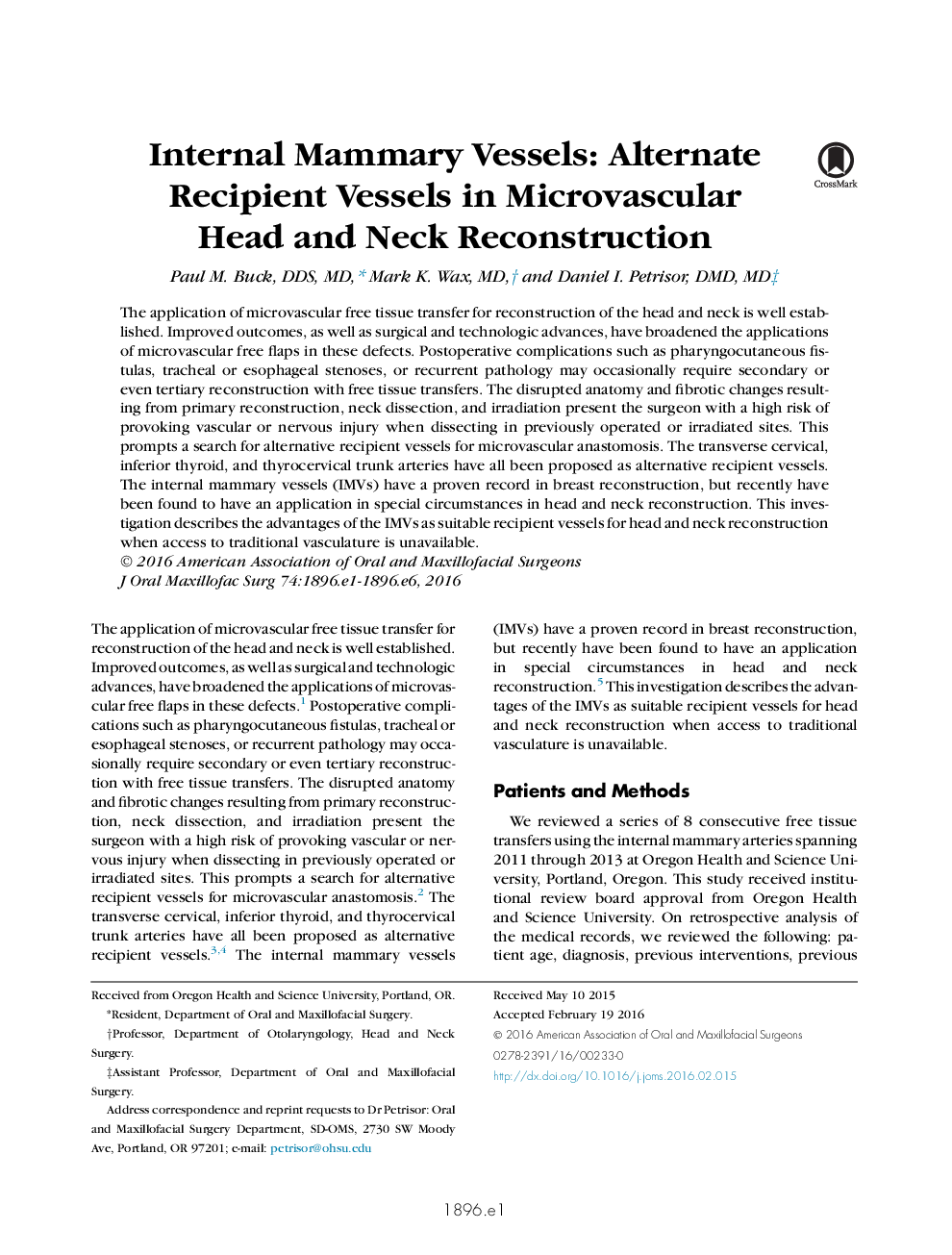| Article ID | Journal | Published Year | Pages | File Type |
|---|---|---|---|---|
| 3152526 | Journal of Oral and Maxillofacial Surgery | 2016 | 6 Pages |
Abstract
The application of microvascular free tissue transfer for reconstruction of the head and neck is well established. Improved outcomes, as well as surgical and technologic advances, have broadened the applications of microvascular free flaps in these defects. Postoperative complications such as pharyngocutaneous fistulas, tracheal or esophageal stenoses, or recurrent pathology may occasionally require secondary or even tertiary reconstruction with free tissue transfers. The disrupted anatomy and fibrotic changes resulting from primary reconstruction, neck dissection, and irradiation present the surgeon with a high risk of provoking vascular or nervous injury when dissecting in previously operated or irradiated sites. This prompts a search for alternative recipient vessels for microvascular anastomosis. The transverse cervical, inferior thyroid, and thyrocervical trunk arteries have all been proposed as alternative recipient vessels. The internal mammary vessels (IMVs) have a proven record in breast reconstruction, but recently have been found to have an application in special circumstances in head and neck reconstruction. This investigation describes the advantages of the IMVs as suitable recipient vessels for head and neck reconstruction when access to traditional vasculature is unavailable.
Related Topics
Health Sciences
Medicine and Dentistry
Dentistry, Oral Surgery and Medicine
Authors
Paul M. DDS, MD, Mark K. MD, Daniel I. DMD, MD,
